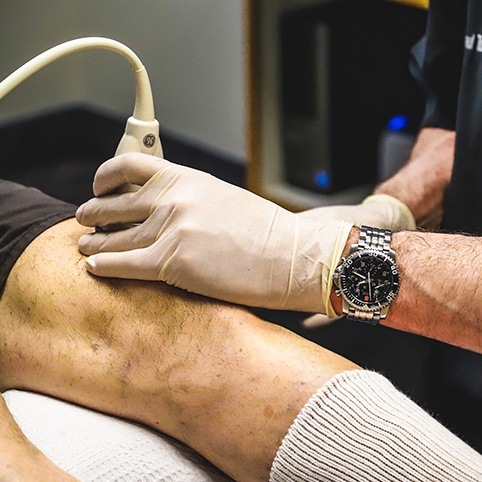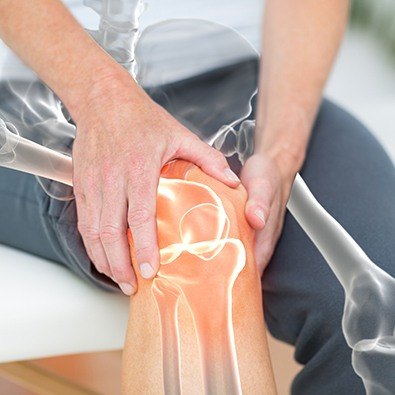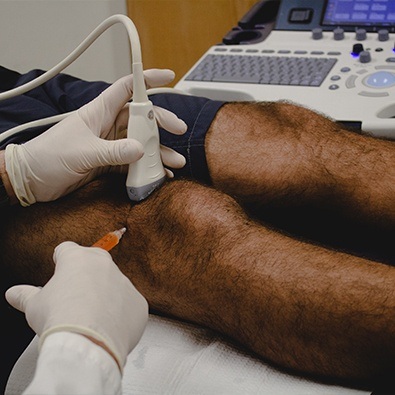
Fax: (860) 430-9693
Glastonbury, CT 06033

Osteoarthritis is a degenerative process that slowly and progressively destroys joints, producing pain, loss of function, and deformation of the affected areas. Regenerative medicine treatments at The New England Stem Cell Institute can help you stay active despite Osteoarthritis. Dr. Paul Tortland can provide PRP and stem cell-based therapies that can reduce your pain, improve function, and restore your quality of life. To learn more about the benefits of our regenerative medicine for treating osteoarthritis in Glastonbury, CT, call our office today or schedule an appointment online!

Osteoarthritis (OA), also known as the “wear and tear” kind of arthritis, is a degenerative process that slowly and progressively destroys joints. Quality of life can decrease considerably due to the pain and lack of movement, and it can become incapacitating in advanced stages. The underlying cause of Osteoarthritis increasingly is being recognized as inflammation leading to cartilage damage due to an inadequate healing response.
As the cartilage breaks down, more bone is exposed, allowing the bones of the joint to rub against each other. The increased stress on the bones can cause spurs to develop. However, the loss of cartilage is NOT the cause of Osteoarthritis. Rather, the loss of cartilage is a result of underlying inflammation that breaks down the cartilage and inhibits the body’s attempt to repair it.

Osteoarthritis has been shown to lead to:
Learn More About Osteoarthritis Symptoms

Current non-surgical treatments for Osteoarthritis include physical therapy, pain medications, non-steroidal anti-inflammatory drugs (NSAIDs, such as ibuprofen, Motrin, and Aleve), and joint injections, such as hyaluronic acid (HA) and corticosteroids.
The goal is to reduce symptoms and improve joint function. However, none of these treatments are able to stop the progression of Osteoarthritis or reverse the resulting damage, often leaving patients with total joint replacement as the only treatment alternative. And, some of these treatments, such as NSAIDs and steroid injections, can actually have serious long-term side effects. For example, we now know that cortisone is actually toxic to joint cartilage! Repeat cortisone injections can actually cause faster decay of the joint.
Some surgeons will do arthroscopic surgery to “clean out” an arthritic knee joint. But, many recent well-done studies have shown that not only does such surgery NOT provide any long-term relief, but it actually increases the speed of worsening arthritis and increases the risk of needing a total knee replacement.
Regenerative Medicine treatment is an excellent non-surgical option for treating Osteoarthritis. The doctors at the New England Stem Cell Institute are leaders and pioneers in Regenerative Medicine, and their goal is to reduce your pain, improve your function, and restore your quality of life.
The regenerative treatments we offer include:
The physicians at the New England Stem Cell Institute have been doing regenerative medicine treatments longer than most in the country. Few have their level of skill and experience.
IMPORTANT : NO regenerative medicine treatment, including stem cell-based therapies, can “regrow” cartilage if there is no cartilage left. No research has ever shown this to occur. The only way to get rid of arthritis in a joint is to get rid of the joint - that is, a joint replacement.
But, these treatments can be tremendously helpful to reduce pain and inflammation. They do this by restoring a healthy biological environment within the joint and surrounding tissues.

One of our primary goals here at the New England Stem Cell Institute is to help our patients be informed, both about their problem as well as the available solutions. We want to empower people to make confident decisions about their care so they can be an active partner in the treatment process, which offers important peace of mind. To that end, we’ve answered some of the most common OA questions we receive below. Be sure to give us a call if you have any others.
We use diagnostic ultrasound as our method of determining whether or not a joint has OA. Unlike a traditional X-ray, diagnostic ultrasound allows us to view the internal workings of a joint in real time, while it moves. This enables us to see the state of the bones, cartilage, and adjacent tissues, which also helps us figure out what may be the best course of treatment.
This depends on many different factors, such as how long the condition has been present, which joint is being affected, and the overall physical health and activity level of the person. Typically, our mission is to slow the progression of the condition to the point that a patient can avoid the need for joint replacement surgery while also experiencing improved function and pain relief.
Each of these treatments is proven to help with OA symptoms, but which one is the best fit for a particular patient depends on things like budget, timeline, and goals. Stem cell therapy offers the best results in most cases, but it’s more expensive than PRP or prolotherapy. If a patient has a more flexible schedule, they may choose one of the other treatments so they can keep costs down. Or, if someone’s goal is to simply get off pain medication, a less aggressive treatment might be perfect for them.
While joint replacement surgery is getting better all the time, it is still major surgery, which always comes with a list of potential risks. In addition to being extremely expensive (much more so compared to regenerative therapies), complications such as infection and death are always possible. Plus, most patients require an extensive recovery period and physical therapy afterward, which can potentially put someone “out of commission” for months. On the other hand, our regenerative therapies allow a patient to maintain their regular life while enjoying the benefits of treatment.
The underlying cause of both is inflammation within a joint, but whereas OA can be caused by injury or overuse, Rheumatoid arthritis is an autoimmune problem, and therefore, requires a different approach when it comes to treatment.